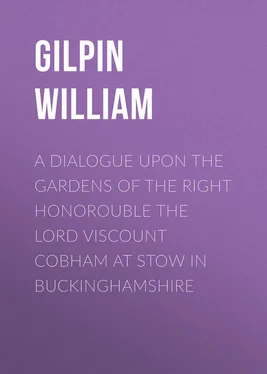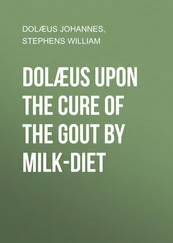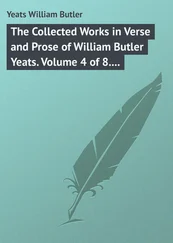William Gilpin - A Dialogue upon the Gardens of the Right Honorouble the Lord Viscount Cobham at Stow in Buckinghamshire
Здесь есть возможность читать онлайн «William Gilpin - A Dialogue upon the Gardens of the Right Honorouble the Lord Viscount Cobham at Stow in Buckinghamshire» — ознакомительный отрывок электронной книги совершенно бесплатно, а после прочтения отрывка купить полную версию. В некоторых случаях можно слушать аудио, скачать через торрент в формате fb2 и присутствует краткое содержание. Жанр: foreign_antique, foreign_prose, на английском языке. Описание произведения, (предисловие) а так же отзывы посетителей доступны на портале библиотеки ЛибКат.
- Название:A Dialogue upon the Gardens of the Right Honorouble the Lord Viscount Cobham at Stow in Buckinghamshire
- Автор:
- Жанр:
- Год:неизвестен
- ISBN:нет данных
- Рейтинг книги:5 / 5. Голосов: 1
-
Избранное:Добавить в избранное
- Отзывы:
-
Ваша оценка:
- 100
- 1
- 2
- 3
- 4
- 5
A Dialogue upon the Gardens of the Right Honorouble the Lord Viscount Cobham at Stow in Buckinghamshire: краткое содержание, описание и аннотация
Предлагаем к чтению аннотацию, описание, краткое содержание или предисловие (зависит от того, что написал сам автор книги «A Dialogue upon the Gardens of the Right Honorouble the Lord Viscount Cobham at Stow in Buckinghamshire»). Если вы не нашли необходимую информацию о книге — напишите в комментариях, мы постараемся отыскать её.
A Dialogue upon the Gardens of the Right Honorouble the Lord Viscount Cobham at Stow in Buckinghamshire — читать онлайн ознакомительный отрывок
Ниже представлен текст книги, разбитый по страницам. Система сохранения места последней прочитанной страницы, позволяет с удобством читать онлайн бесплатно книгу «A Dialogue upon the Gardens of the Right Honorouble the Lord Viscount Cobham at Stow in Buckinghamshire», без необходимости каждый раз заново искать на чём Вы остановились. Поставьте закладку, и сможете в любой момент перейти на страницу, на которой закончили чтение.
Интервал:
Закладка:
William Gilpin
A Dialogue upon the Gardens of the Right Honorouble the Lord Viscount Cobham at Stow in Buckinghamshire
INTRODUCTION
Stowe is certainly the most documented of all English Augustan gardens, 1 1 Before 1753 there was no guide to any English garden except Stowe; by then the Stowe guidebook had gone through sixteen editions (one in French) plus two pirated editions, the Dialogue itself which mentions the guidebook on p. 17, and two sets of engraved views. For a modern account of Stowe see Christopher Hussey, English Gardens and Landscapes, 1700-1750 (London: Country Life, 1967), pp. 89-113. As a companion piece to this facsimile of Dialogue , ARS plans to publish in its 1976-77 series a facsimile of the Beauties of Stowe (1750), with an introduction by George Clarke.
and William Gilpin's Dialogue probably one of the most important accounts of it. He was at Stowe in 1747 and published his record of that visit anonymously the following year. 2 2 Gilpin's authorship is argued by William D. Templeman, The Life and Works of William Gilpin (1724-1804), Illinois Studies in Language and Literature , XXIV. 3-4 (Urbana, 1939), pp. 34-5.
The Dialogue reached a second edition, with some slight alterations in the text, in 1749 and a third in 1751, when the dialogue was transformed into narrative.
The Dialogue recommends itself both to the historian of the English landscape movement, in which Stowe was a prime exhibit, and to the student of the later vogue for the picturesque, in which Gilpin was a major participant. His account of Cobham's gardens illuminates some of the connections between the cult of the picturesque that Gilpin fostered with his publications of the 1780s and the earlier eighteenth-century invocation of pictures in gardens.
Perhaps in no other art form were the tensions and transformations in the arts more conspicuous than in landscape gardening. Gilpin is especially rewarding in his instinctive attention to these shifting patterns; although the dialogue form is not very skillfully handled, it yet allows some play between the rival attitudes. Thus his characters attend to both the emblematic and the expressive garden; 3 3 The distinction is made by Thomas Whately, Observations on Modern Gardening , 5th ed. (London, 1793), pp. 154-5.
to both its celebration of public worth and its commendation of private virtue. While Gilpin seems sufficiently and indeed sharply aware of set-piece views in the gardens, the three-dimensional pictures contrived among the natural and architectural features, he also reveals himself as sensitive towards the more fluid psychological patterns, what one might term the kinema of landscape response. Above all, his obvious delight in the landscape garden and appreciation of it vie with an equally strong admiration for scenery outside gardens altogether.
At the time of Gilpin's visit, Lord Cobham's gardens were substantially as they are represented in the engravings published in 1739 by the widow of Charles Bridgeman, one of Stowe's designers. In the year of Gilpin's visit work had just started in the northeast part of the grounds upon the natural glade that came to be known as the Grecian Valley. 4 4 The Grecian Valley is seen first on Bickham's engraved plan of 1753. This and other plans of Stowe are reproduced by George Clarke, "The Gardens of Stowe," Apollo (June, 1973), pp. 558-65.
Whether it is the work of Lancelot ("Capability") Brown, who was then a gardener at Stowe, or only prophetic of it, the Grecian Valley was a hint of the less architectural, the more carefully "natural" gardens of the next decades. Although Gilpin would presumably have seen little of this most advanced example of gardening style, he would still have observed what were, in the terms customarily invoked, formal and informal ingredients at Stowe. From the Rotunda, for example, he looked over the (now vanished) Queen's Pool, "laid out with all the Decorations of Art" (p. 15), including the oblong canal itself and various statues; the first body of water encountered beside the Lake Pavillions (p. 4) was octagonally shaped and bore an obelisk at its centre. Yet elsewhere there was frequent occasion to praise prospects that obviously seemed much less artificial.
If there is any distinction between the two participants in the Dialogue , it is certainly between the one's taste for the evidence of art and the other's penchant for natural beauties. If their opposition is not very conspicuously maintained by Gilpin, it is surely because his own loyalties were divided and were to be reconciled only with some subtlety and ingenuity later in his career. Callophilus, who cites Pope's balanced instructions on the mixture of art and nature (p. 26), is more inclined to appreciate these elements in the garden where Nature's defective compositions have been improved; the love of beauty that his name announces is of beauty methodized, though without exceeding "a probable Nature" (p. 6). On the other hand, his enthusiastic companion, Polypthon, directs his eponymous ill-will mostly against the decorations of art: the "hewn Stone" of Dido's Cave particularly offends him (p. 14), and he "cannot very much admire" the canal below the Rotunda (p. 15). Yet he seems to share Callophilus' notions about "mending" nature (p. 23), and it is he who proposes a landscape that, substituting farm-houses for temples (p. 45), approximates most clearly to that prettiest of eighteenth-century landscape ideas, the ferme ornèe . Polypthon's predilection for scenery outside gardens seems equally compromised by his ready assent to Callophilus' praise of the carefully studied contrasts in Stowe gardens: so that he may turn from the less agreeable vista down the Queen's Pool and look instead over Home Park, earlier noted for its "rural scene" (p. 8), and now admired as a natural field – though the cattle prominent in Rigaud's drawings 5 5 See Peter Willis, "Jacques Rigaud's Drawings of Stowe in the Metropolitan Museum of Art," Eighteenth-Century Studies , 6 (1972), 85-98.
are not mentioned.
But what is artless for Polypthon is studied by his companion in terms of art: "the Field is formed by that Semi-circle of Trees into a very grand Theatre" (p. 15, my italics ), and his eye registers an architectural feature – Vanbrugh's Pyramid – as the apt centre of that field of vision. This particular exchange at the Rotunda suggests that the usual modern discussion of landscape gardens in terms of their diminishing formality or escalating informality is less Gilpin's concern than the mind's involvement with the various landscapes. Callophilus and Polypthon can apparently both contemplate the same scene from the Rotunda, southwest towards Kent's Temple of Venus and Vanbrugh's Pyramid, yet adjudge its artifice differently. What is evidently at work in Gilpin's record of this garden is the mental experience of it, and in his case the ambiguities of his visual response.
The complicated geometry that began on Bridgeman's drawing board 6 6 See George Clarke, op. cit. , p. 560.
and then was transferred to shape the grounds is certainly a survival of the old-fashioned French style in gardens. Its presence is registered by Gilpin, who allows Callophilus to note how the Gibbs building, like many other objects at Stowe designed to be seen along a variety of axes, "has its Use … in several Prospects" (p. 8). But the psychology of the viewer has at least equal weight in Gilpin with the many-faceted object viewed from different positions. 7 7 On this topic see two essays by Ronald Paulson: "Hogarth and the English garden: visual and verbal structures," Encounters, Essays on Literature and the Visual Arts , ed. John Dixon Hunt (London: Studio Vista, 1971), and "The Pictorial Circuit and related structures in eighteenth-century England," The Varied Pattern , ed. Peter Hughes and David Williams (Toronto: Hakkert, 1971).
And in those circumstances the presence of formal or informal designs upon the ground or the drawing-board matters less than the variety of objects and scenes within a garden and even, as at the Rotunda, the variety of viewpoint and interpretation within one vista.
Интервал:
Закладка:
Похожие книги на «A Dialogue upon the Gardens of the Right Honorouble the Lord Viscount Cobham at Stow in Buckinghamshire»
Представляем Вашему вниманию похожие книги на «A Dialogue upon the Gardens of the Right Honorouble the Lord Viscount Cobham at Stow in Buckinghamshire» списком для выбора. Мы отобрали схожую по названию и смыслу литературу в надежде предоставить читателям больше вариантов отыскать новые, интересные, ещё непрочитанные произведения.
Обсуждение, отзывы о книге «A Dialogue upon the Gardens of the Right Honorouble the Lord Viscount Cobham at Stow in Buckinghamshire» и просто собственные мнения читателей. Оставьте ваши комментарии, напишите, что Вы думаете о произведении, его смысле или главных героях. Укажите что конкретно понравилось, а что нет, и почему Вы так считаете.












